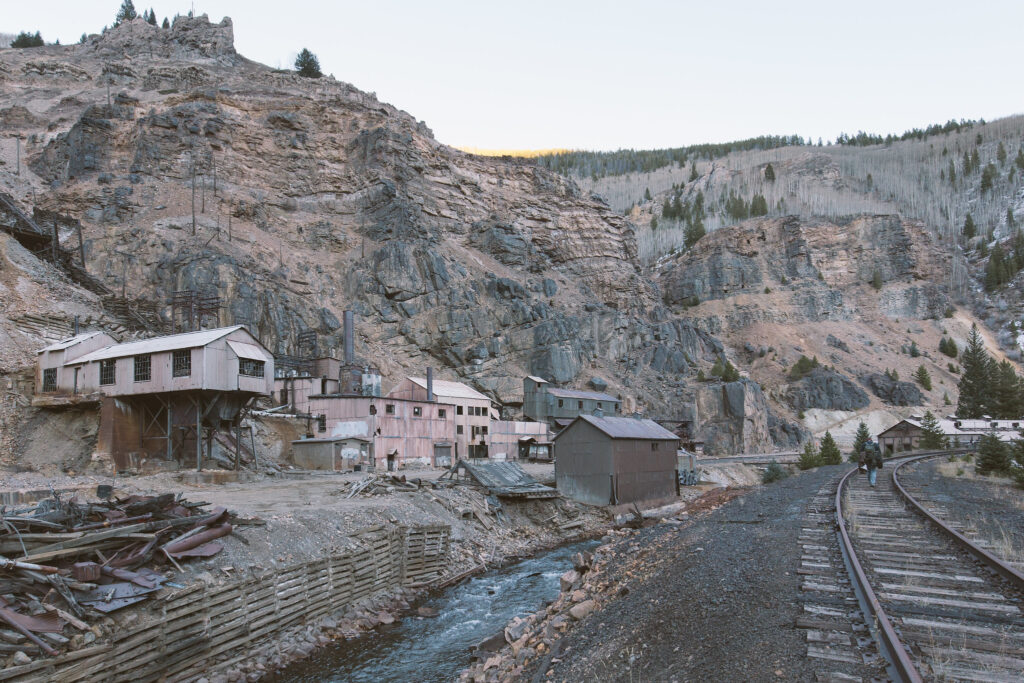A public comment submitted to the Department of the Interior with recommendations on how to improve federal hardrock mining laws and regulations.
Main Points
- Policies should be reformed to better engage Good Samaritans in cleaning up abandoned hardrock mines.
- Any system for acquiring rights to mine federal land should allow conservationists to also acquire them for conservation purposes.
Introduction
Historically, federal lands were “free and open” to mining. The settlement of the West was shaped by hundreds of thousands of prospectors who rushed from the East hoping to strike it rich, often seeking their fortune on lands owned by the federal government. Many of these mines have since been abandoned, and up to 500,000 abandoned mines continue to leak toxic pollution every single day into streams that provide fish habitat, outdoor recreation, and drinking water. It is estimated that 110,000 miles of river are polluted with acid mine drainage, including 40 percent of headwater streams in western states, creating unconfined impacts on areas far beyond the initial point of contamination.
Responsibility for cleaning up abandoned mines on federal lands generally falls on the government, since parties who might otherwise be responsible are usually deceased or bankrupt, and the land has no current private owner to stick with the bill. But the number of sites needing restoration far outpaces the federal government’s capacity. Based on recent trends, the Environmental Protection Agency faces more than a 100-year backlog of sites on its national priorities list, and very few abandoned mines have been deemed a high enough priority to make this list.
In addition to time, abandoned hardrock mine cleanup comes with an expensive cost. It is estimated that cleaning up only abandoned mines found on federal lands could cost up to $21 billion, but annual appropriations for the Superfund cleanup program has averaged just over $1 billion in recent years.
Barring a dramatic change in political winds, the resources needed to clean up abandoned mines will need to come from outside the federal government. Fortunately, conservation groups, local governments, and private industries who benefit from such mine cleanups have demonstrated an interest in contributing to the effort. Conservation groups indicate interest in cleaning abandoned mines to protect species that may be exposed to toxic pollution from abandoned mines. Mining companies hope to gain a profit by revitalizing these old mines and extracting valuable minerals that were previously left in the mine. Utility companies want to lessen their costs as decontaminating the mine will be cheaper than treatment costs to the water.
These Good Samaritans, however, are often dissuaded from undertaking the types of cleanups these mines require because of permitting and liability challenges. The Comprehensive Environmental Response, Compensation, and Liability Act (the Superfund program) and the Clean Water Act have the unintended effect of sticking any Good Samaritans with responsibility for pollution they did not cause. The EPA’s Good Samaritan Initiative from 2007, which sought to reduce Superfund’s perverse incentives, was beneficial but incomplete because the initiative was issued as mere “guidance” and the established process can be cumbersome for Good Samaritans to navigate. But the Clean Water Act is the bigger obstacle, as it creates an “if you touch it, you own it” policy. Were Good Samaritans to reduce pollution (even dramatically) from a site covered by the Clean Water Act, that law would penalize them with perpetual liability for any pollution that could not be addressed.
The Interagency Working Group should work with Congress to empower Good Samaritans to cleanup abandoned mines and improve the environment. Doing so means eliminating the disincentives for mine reclamation created by Superfund and the Clean Water Act. One existing legislative proposal, for instance, would authorize the EPA to issue Good Samaritan permits that limit a Good Samaritan’s liability to violations of the permit that result in environmental conditions worse than those that existed before the cleanup was undertaken. The Good Samaritan Remediation of Abandoned Hardrock Mines Act (S. 3571), bipartisan legislation introduced in the 117th Congress, would help achieve this goal by establishing a new pilot program administered by the EPA to permit up to 15 Good Samaritan abandoned mine cleanups.




